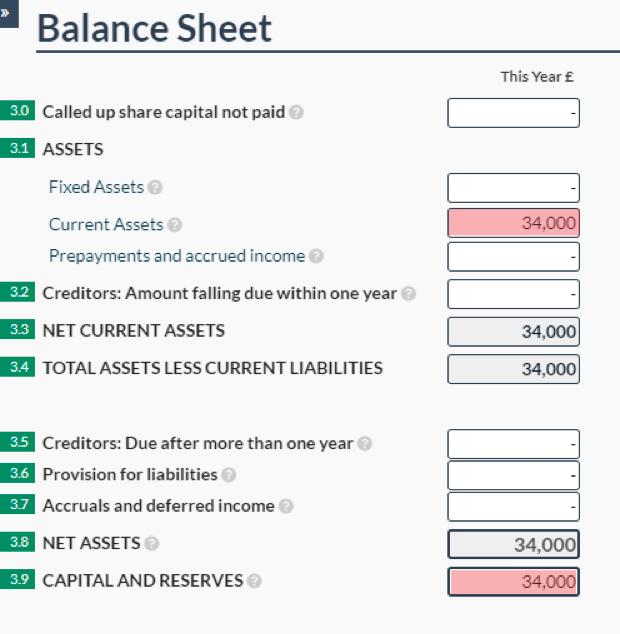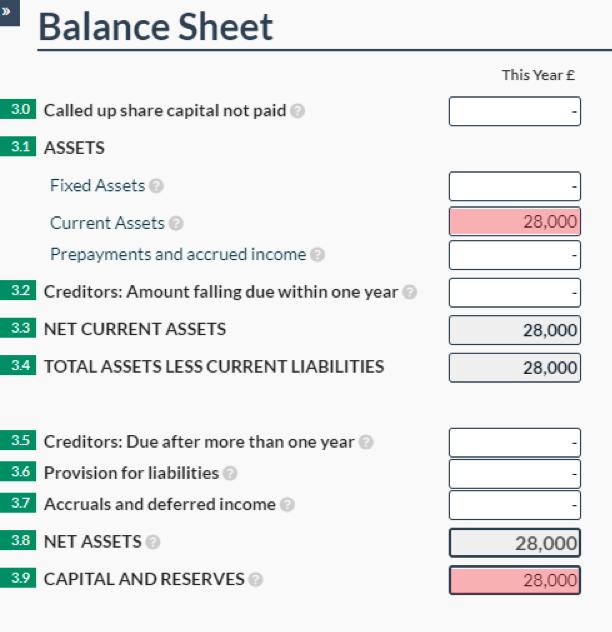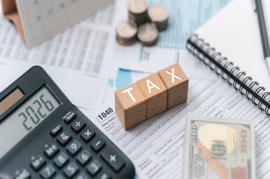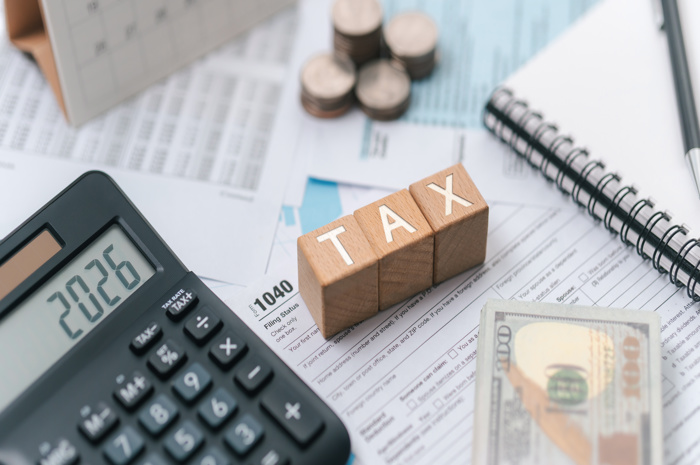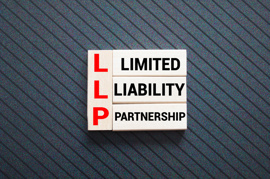As a business owner, grasping the distinctions between various tax rates and their applicable contexts is essential. When you own a Limited Company, you are obligated to pay corporation tax on the profits earned. However, should you choose to distribute dividends from these profits, they are not subject to corporation tax rates but are instead taxed under income tax rates applicable to dividends. Understanding these differences may initially seem daunting, but it is crucial for accurately declaring your income and ensuring both you and your company pay the correct amount of tax.
Corporation Tax
'Corporation Tax' is tax that Limited Companies are charged on their annual taxable profits. The tax rates can differ depending on the size of your company. There is the main corporation tax rate, the small profits rate, and then the marginal rate relief scheme; which also affects the tax rates.
The main corporation tax rate is 25%, meaning that you must pay 25% tax on your profits. Therefore, if your profits were £350,000, then you would pay £87,500 of tax (which is £350,000 x 25%). Companies who have taxable profits of £250,000 or over must pay the main rate of corporation tax.
The small profits rate for corporation tax is 19%, meaning that you must pay 19% tax on your profits. Therefore, if your profits were £25,000, then you would pay £4,750 of tax (which is £25,000 x 19%). Companies who have taxable profits of £50,000 or less are eligible for the small profits rate, so this typically tends to apply to micro companies only.
From 1st April 2023, HMRC also introduced a new tax relief scheme called Marginal Rate Relief. This was designed to provide tax relief for smaller companies whose taxable profits were between £50,000 and £250,000. This means that the corporation tax rate differs depending on the company’s taxable profits, number of associated companies, and whether there were any distributions made during the accounting period. The corporation tax rate is typically between 19% and 25%, however, your company’s taxable profits must be between £50,000 and £250,000 to be eligible for this tax relief scheme. This relief scheme was implemented when the corporation tax rates changed on 1 April 2023, therefore, if your company’s accounting period falls across the two financial years, then the tax rates will need to be apportioned across the two tax years.
If you choose to file your returns through Easy Digital Filing, our software will automatically calculate the corporation tax due based on the accurate rate that your company is eligible for, and will apportion it for you if your accounting period falls across the two financial years. If your company also qualifies for Marginal Rate Relief, our software will take this into account and calculate your new tax rate and tax due for you. Please feel free to have a go at using our
tax calculator, which will calculate the amount of tax which is due - taking into account marginal rate relief, and more!
Tax on Dividends
Dividends are distributions of profits by a company to its directors or shareholders and can only be taken if a company is profitable, but not if they’re loss-making. There are specific tax rates for dividends, which differ from both the corporation tax rates and the income tax rates.
Much like with income tax, there is an allowance, known as ‘dividend allowance’, which you are not liable to pay tax on. This financial year, from 6th April 2024 to 5th April 2025, the dividend allowance is £500, which was reduced from £1,000 the previous financial year. Anything above the allowance is liable to be taxed.
There are three tax rates that dividends are charged at; basic rate, the higher rate, and the additional rate. The rate at which you are charged dividends tax is determined by your Income tax band; which is also separated into the allowance, the basic rate (which is at 8.75%), the higher rate (which is at 33.75%), and the additional rate (which is at 39.35%). For income tax, the basic rate (which is for taxable income between £12,571 and £50,270) is taxed at 20%. The higher rate (which is for taxable income between £50,271 and £125,140) is taxed at 40%. And finally, the additional rate (taxable income over £125,140) is taxed at 45%. Your income tax band is determined by adding together your dividends and any other income you receive, then subtracting the personal allowance to calculate the remaining taxable amount.
Here is an example of how to calculate the tax on your dividends:
Example 1: Financial Year 2023/2024:
In this scenario, you have received £32,500 of income from your wages, but you also receive £2,000 of dividends.
Your total income is: £32,500 + £2,000 = £34,500.
For income tax, there is a personal allowance of £12,570, which is exempt from tax, so you must reduce your total income by this amount: £34,500 - £12,570 = £21,930.
This falls within the basic rate tax band, so you would pay 20% tax on your income and 8.75% tax on your dividends.
You must separate the income from the dividends before you can determine the total tax to pay, therefore, £21,930 (total income after allowance) - £2,000 (total dividends received) = £19,930.
You would then pay 20% tax on £19,930 of your wages.
To determine the tax to pay on dividends, you need to reduce your total dividends by the dividend allowance, which during this financial year was £1,000. Therefore, the total taxable dividends are £2,000 (total dividends received) - £1,000 (dividend allowance) = £1,000 (total taxable dividends).
You would then pay 8.75% tax on £1,000 of your dividends.
What if I don’t receive any other income besides dividends?
When your total income—including wages, dividends, and other earnings—exceeds the income tax personal allowance, you are required to pay tax. However, if your sole income for the tax year was, for instance, £8,000 from dividends, you would not be liable for tax since this amount falls below the personal income tax allowance of £12,570, despite exceeding the dividends allowance. Thus, the dividends allowance is only relevant when your total income surpasses £12,570.
However, there are rules to this; as this only applies for dividends up to £10,000. If you received dividends of £10,000 or more, these must be declared in a self-assessment tax return, even if you didn’t receive any other income during the financial year. Please remember that if you are required to submit a self-assessment tax return and you have not done so before, you must register for this by October 5th in the following tax year. This means that if you must submit a self-assessment tax return for the tax year 2023/2024, you must register by 5th October 2024.
But where do I account for dividends in my company's accounts?
Taking dividends out of the company is a simpler process than when your company receives dividends. This is reflected on the company's balance sheet, so you simply need to reduce the capital and reserves by the amount of dividends you took out. It is important to remember that your company must have been profit-making during the accounting period in order for dividends to be taken out of the company (even if your capital and reserves are positive after you made a loss in the period).
Example 1:
If this is your company's first year, and it made a profit of £34,000 during the accounting period, then your company's balance sheet might look something like this:
The current assets would reflect the ending bank balance of the company (assuming that only the income and expenses came out of the bank account during the period), and the capital and reserves would reflect the net profit of the company.
However, if you then decide that you want to take out £6,000 of dividends from your company's profits, you would need to reflect this in your balance sheet:
The current assets are now updated to reflect your company's new bank balance. For example, if you started with £34,000 and withdrew £6,000, your remaining balance would be £28,000. Similarly, the capital and reserves now show a deduction for the dividends paid, mirroring the net profit adjustment from £34,000 to £28,000. This change affects only your balance sheet, as your income statement remains unchanged by the transaction. For more information on completing your company's accounts, please feel free to take a look at our article '
How to Create Micro Entity iXBRL Company Accounts'.
It's as straightforward as that! Once you've recorded the dividends in your company's accounts, remember to also declare them on your self-assessment tax return if they exceed the dividend allowance. For more detailed information, you can visit the
HMRC website.
This article is information only and has been prepared for general guidance on matters of interest only, and does not constitute legal, accounting, tax, investment or other professional advice or services. You should not act upon the information contained in this article without obtaining specific professional or legal advice. No representation or warranty (express or implied) is given as to the accuracy or completeness of the information contained in this article, and, to the extent permitted by law, Comdal Limited, its members, employees and agents do not accept or assume any liability, responsibility or duty of care for any consequences of you or anyone else acting, or refraining to act, in reliance on the information contained in this publication or for any decision based on it.
